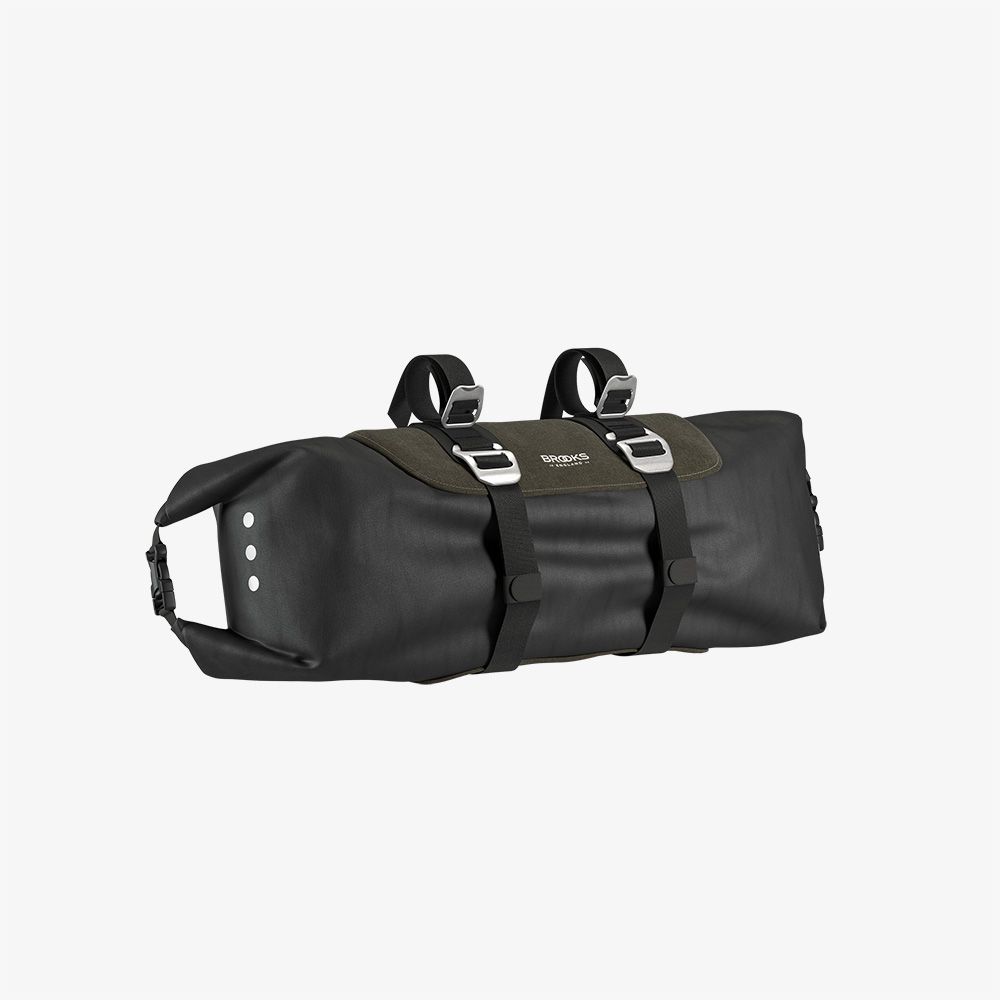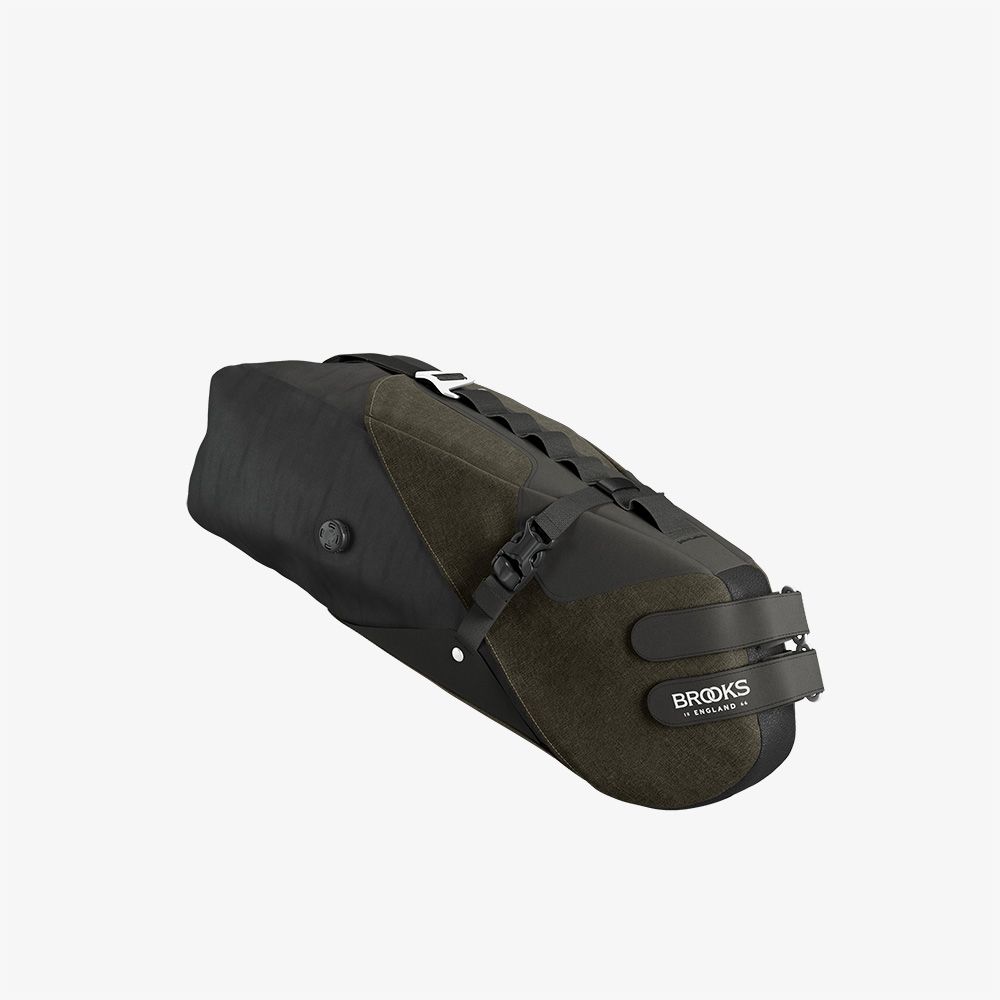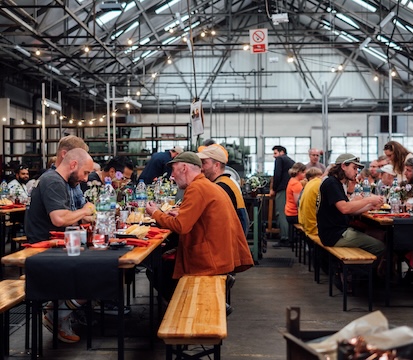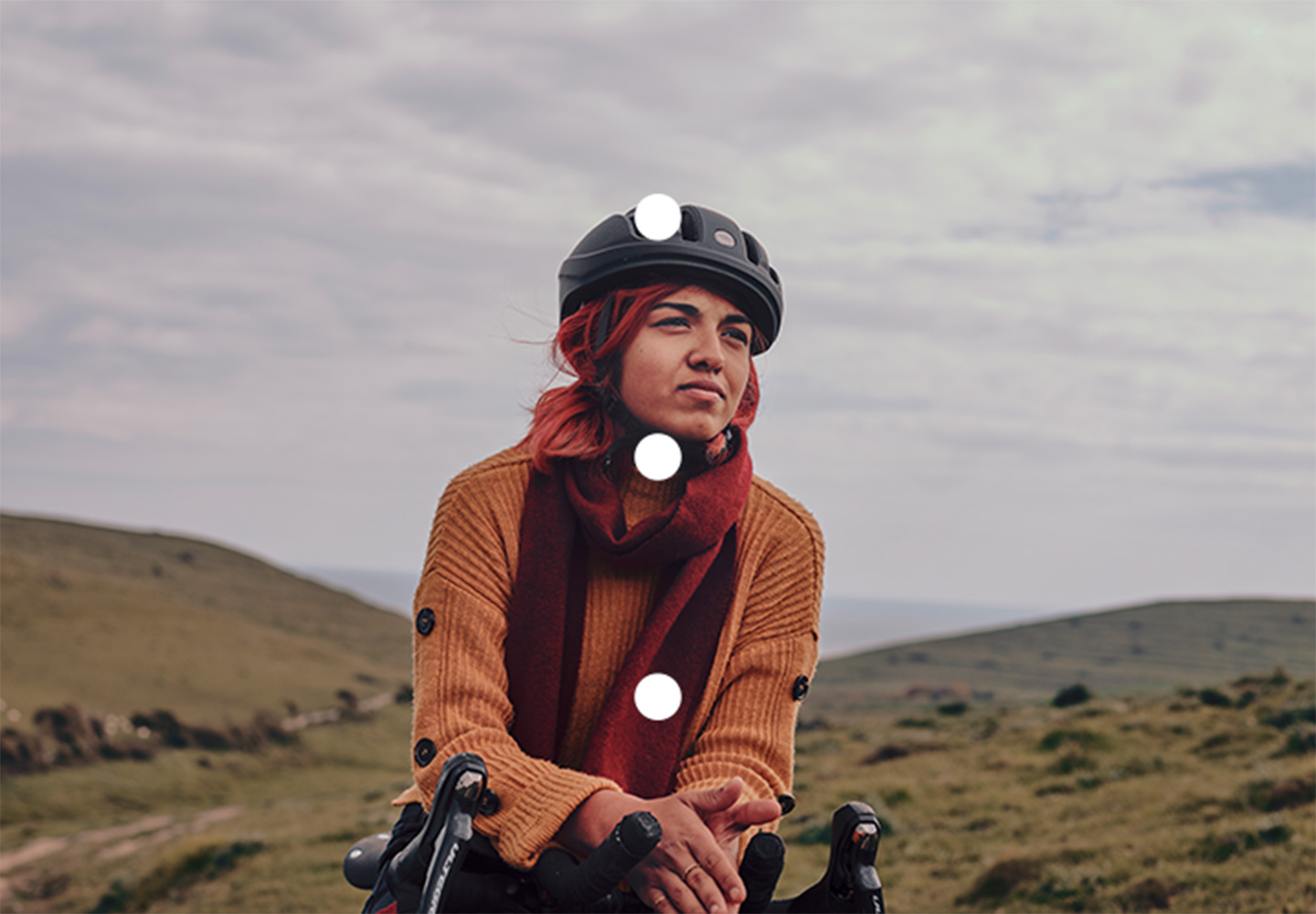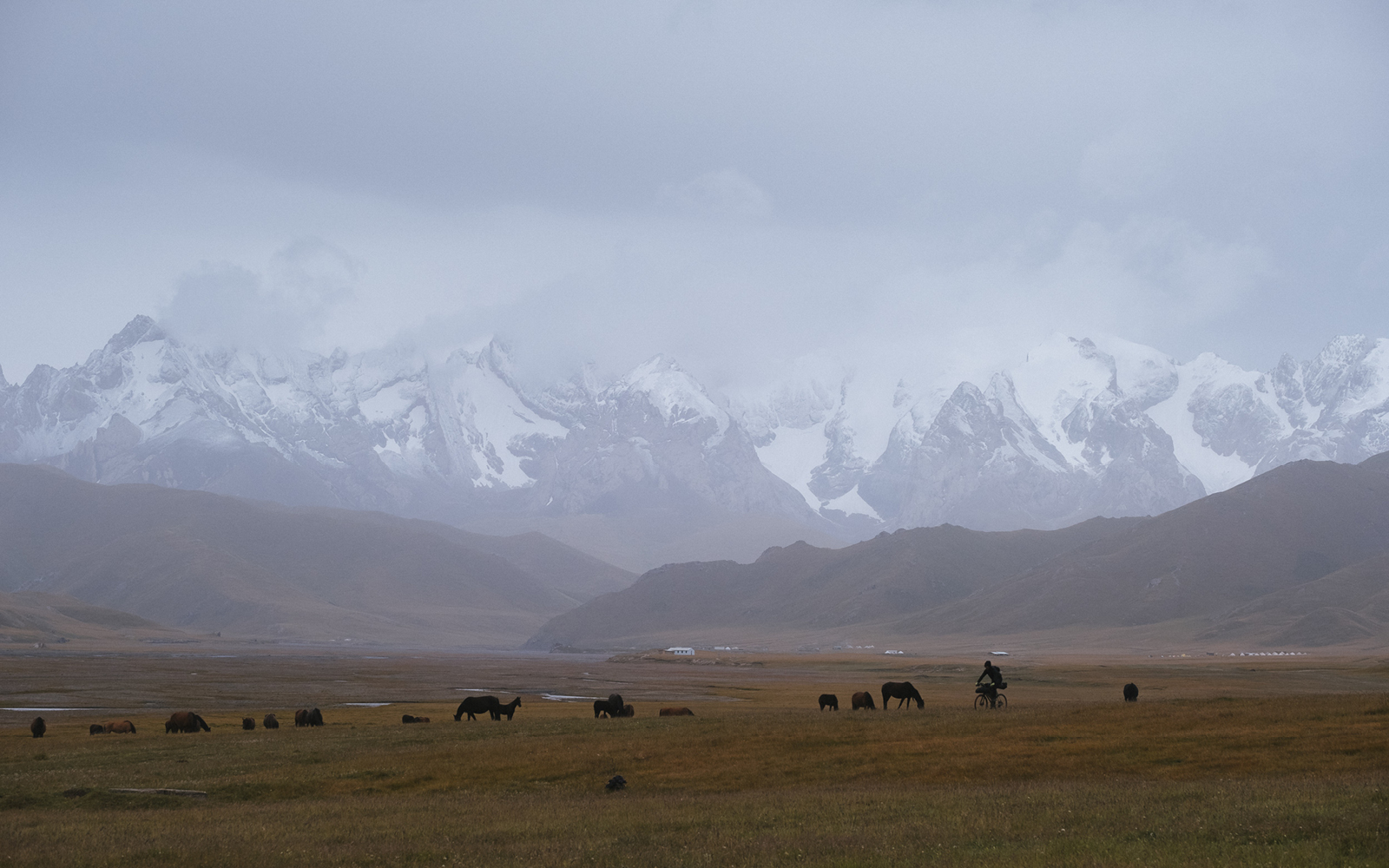
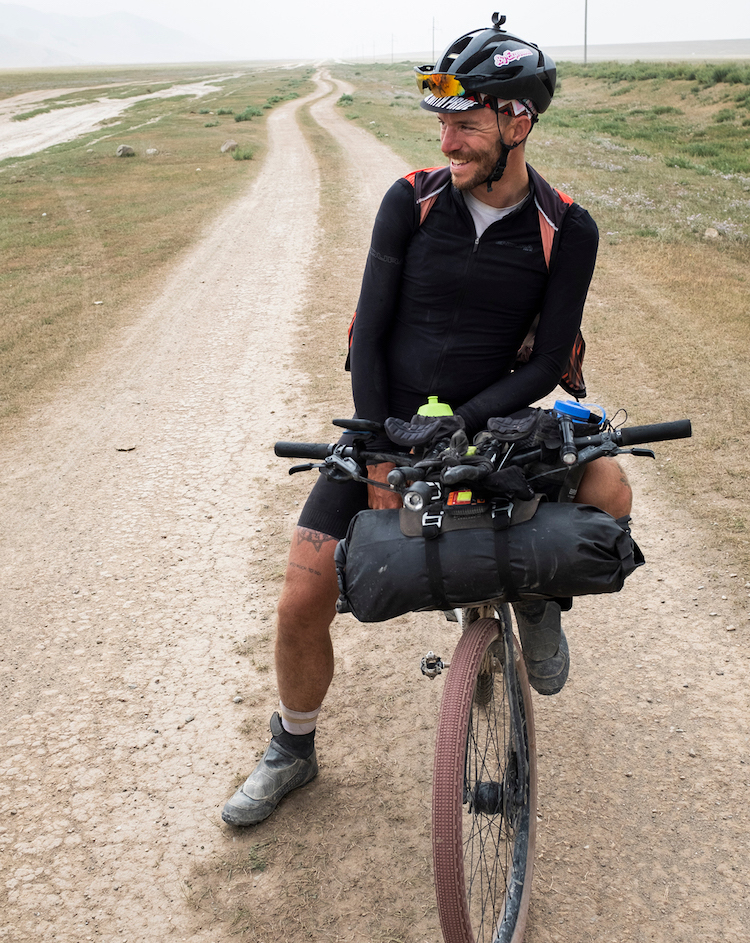
Events
Unity and isolation in Kyrgyzstan, with Allan Shaw
Brooks rider Allan Shaw looks back on a transformative experience in Kyrgyzstan
By Kit Nicholson
More bike messenger than endurance racer, Allan Shaw knew he had a serious challenge waiting for him in Kyrgyzstan. Fit, healthy and well-informed though he was, Shaw learned fast that there’s only so much preparation you can do for a race like Silk Road, and only so much you can rely on expectations. By the end of his race, he had been on a journey of extremes, in landscape, topography and emotion.
One of the main challenges of the Silk Road Mountain Race is the terrain. For all but those who have done the race before, the rocky mountains and impossibly long, empty valleys of Kyrgyzstan are alien territory for the riders. And the sheer scale puts a human in their place.
“Kyrgyzstan is really big and it’s very empty,” Shaw said, while enjoying a well-earned double dessert of panna cotta and chocolate cake on the day of his return flight. “It’s got a really intense level of diversity to it as well. There are very dry deserts, big yellow-orange rock formations, and then you’ll go through a few valleys and in the near distance it’s like Scotland, you’ll find lush green pine tree forests.
“Once you get up to a certain altitude, you lose all the trees and the colours are monochromatic like you’re on the surface of a different planet. The difference with a race like Silk Road is that compared to a normal bike tour, you’re pushing a much higher mileage. So over the course of a single day, you can pass through vastly different landscapes. But the unifying thing about all of them is that they’re all pretty empty in a way that is very powerful; each landscape has solitude and isolation in common.”
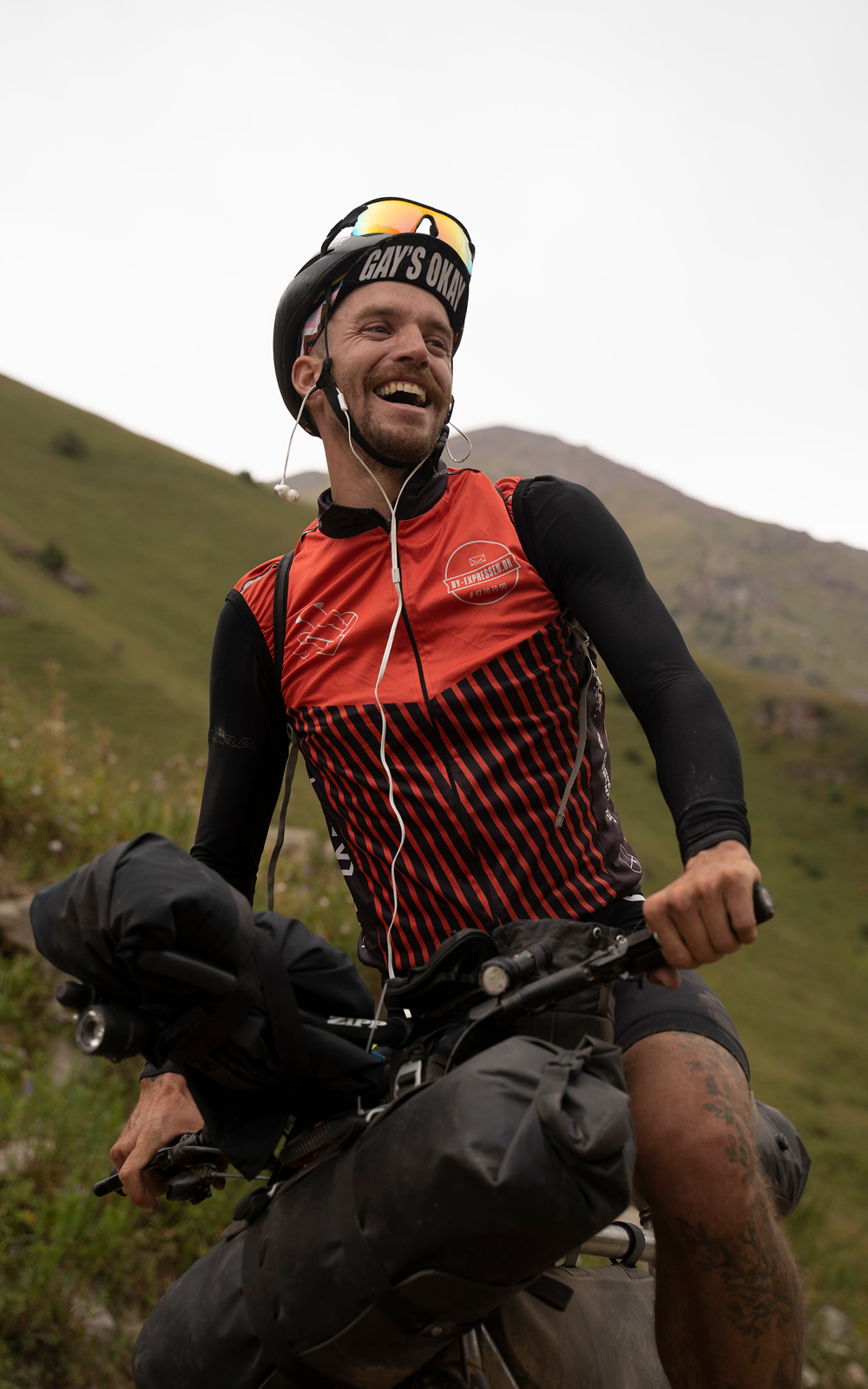
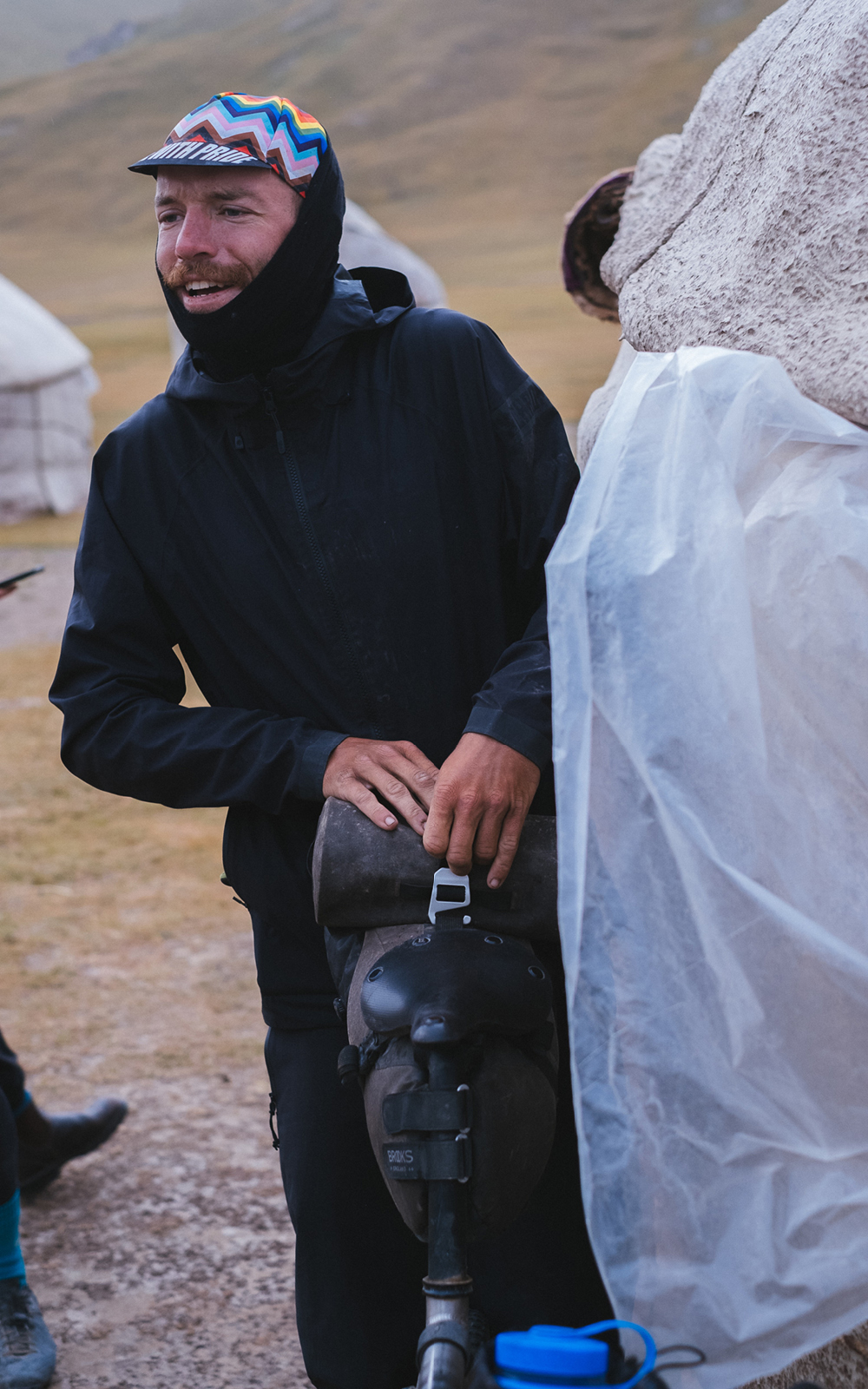
Amid the vast, lonely and unforgiving landscape, the Silk Road racers weren’t completely alone. After a time, Shaw found familiarity in each new sign of human life, united in their solitude.
“There are small pockets of people everywhere. It’s very normal to see a single yurt with a small flock of sheep, a herder and two kids in the middle of nowhere. You’ll be 200km out of a town and find a yurt, and then you’ll go another half-hour through this increasingly empty valley, and there’ll be another. I thought to myself, ‘Wow, why did you choose here? So far from the town?’ They each very much have their own spots, and after a while, you find yourself admiring the fact that they must choose these places because they’re practical and beautiful and there’s no one else there. They have exclusive access to the land.
“The nomadic people living in yurts are very very friendly, but not in a particularly invasive way. You always get a wave, if you’re close by, you’ll get a handshake, and if you hang out for too long, you’ll be invited in, but that can be a very time consuming affair if you’re in a hurry. And there’s cattle everywhere! The longest I went without seeing a cow was maybe four hours – it’s funny what you notice.”
Every participant was given a 42-page race manual prior to the event. Shaw’s first impression was that it was an alarmingly hefty volume, but he soon learned that a great deal had been left out.
“There’s only so much you can write in a race manual compared to the experience of being out there. You start to realise that you never really know what’s coming next. You had to be ready for whatever landscape, and you had to keep your eyes open because it was not going to be a trip that existed in monotony. I think Nelson [Nelson Trees, Silk Road race director] did a really good job. One thing he really tried to highlight is you’ve got to know what you’re in for, and you’ve got to be ready for anything – you really could put your life in danger if you’re not careful.”

Shaw had never done one of Nelson Trees’s races before, but he knew that the ‘final pass’ was a big event, deliberately one of, if not the biggest challenge of the whole race.
“This final pass was essentially an eight hour hike. I’d had two days of quite intense food poisoning leading up to it, so I’d already done an outrageous amount of climbing on an almost completely empty stomach and I was not my best. I knew this was final push territory. I got to the bottom of this ‘hike’ at about 4pm and I knew I had two people behind me, but then a good chunky gap behind them, so I just decided to forfeit those two places. I didn’t want to be completely and totally miserable, hiking into the dark on an empty stomach. So I took my only guest house of the whole trip, slept for a clean nine hours, and then started at 3am.”
Metaphors abound in events such as this – lone cyclists forced to climb scree-covered moonscapes, attack multiple false peaks and then descents that offer no respite. Something that kept recurring for Shaw was the idea that it’s not over till it’s over.
“When I got to the top it was snowing, which then turned into rain. And there was a tailwind, a gale force wind behind me that had me leaning into it. I could barely keep my bike upright. So the whole process was just: nothing comes easy in Silk Road. This is your last push on one of the hardest days, and it was one of the hardest stretches of the whole race.
“To call it a ‘solid final challenge’ [as it was in the race manual] is the understatement of the century. There were three peaks on that climb, which is a bit demoralising because you don’t know when it’s going to end, it just takes forever to get onto the last peak. I was in a bit of an emotional slump in the middle when some people went past me and they actually spoke surprisingly good English. The first thing they said to me was ‘It’s very impressive, what you do.’ I just laughed in their faces. Impressive is one word, but it’s not the one I’d use at this point. I’m not impressed by me right now, I just think I’m very silly.”
It’s common knowledge that a major endurance event, whether it’s one day or spread across multiple, demands a great deal not just physically but mentally from the rider. There is always a payoff though, and never more so than in an untouched and unfamiliar landscape where each effort is rewarded by a vista rolling out before you.
“I found myself wondering why Nelson puts some of these things in the race, but then in certain different snapshots of moments, you catch a view and you realise why it’s there. Coming over the second ridge, just before the final little section of the pass, you descend onto this incredible lake that is so unique and beautiful. It’s completely isolated, in the middle of nothing, and no tourists would ever find themselves there. That’s kind of the essence of this race: finding yourself in these places that you’d never take yourself nor necessarily ever be taken. It’s unique, and punishing.”
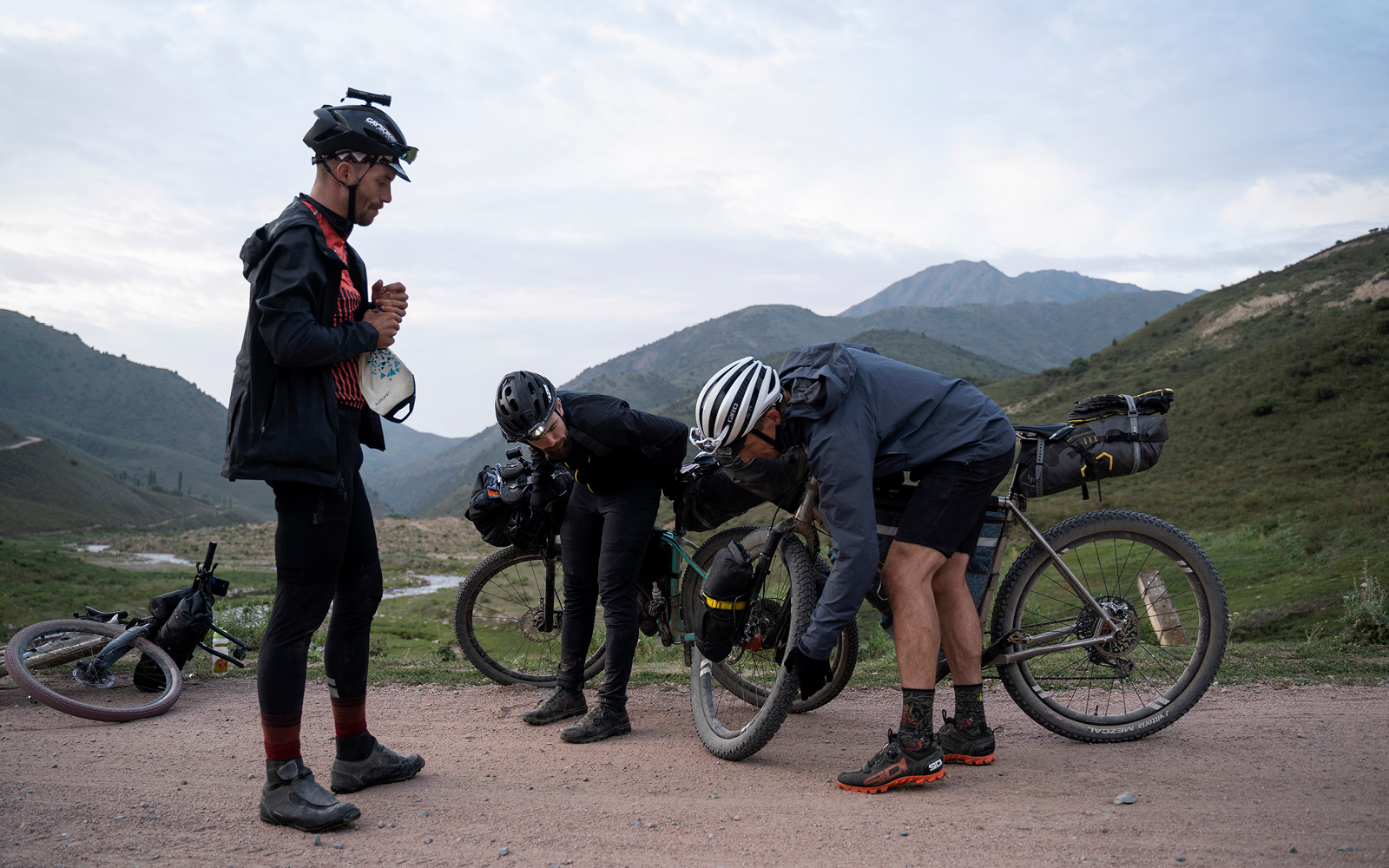
Preparation and competition are major talking points whenever endurance, tough terrain and long distances come under discussion. An early flight into Kyrgyzstan meant that Shaw could spend some time riding in the mountains and getting acclimatised, albeit mindful of protecting himself and his bike (and his brake pads), but as the start line drew nearer, there was little more that could be done. Only the way you go about it, each rider’s plan for each day – their race tactics, if you will – could change, but Shaw was comfortable in keeping to his own schedule.
“Everyone rides a race like this in a different way. I for one don’t really like riding into the night, but I do like getting up crazy early in the morning. I’m good with that. So I prefer to stop by 10pm and then start riding around 4am. People would pass you in the evening when you’re setting up camp, but in the morning you pass them.”
Kit and supplies were another challenge, but one that Shaw took in his stride. Armed with a collection of Brooks luggage, he had no trouble carrying everything he needed, and perhaps a little more.
“The handlebar roll bag is really cool. It was very easy to switch things around and I got the hang of the storage very quickly. In terms of packing, I probably had a little bit more than I needed, but I had more than enough capacity, and I was never worried about waterproofing or anything. Everything worked out perfectly.”
It never mattered to Shaw whether he finished 5th or 9th, 12th or 30th. For him it was more about pushing himself day after day in one of the hardest physical challenges he’ll ever face. That said, he did find the ‘race’ element to be a really good motivator.
“If someone catches up to you, your first thought is ‘Oh of course, I’m exhausted and this is terrible’. But it’s actually such a mood booster just to see another person. I saw so few people across my whole time in the race.”
Shaw revelled in the simple day by day grind, pushing his body as far as it could go, but he was quick to say that he didn’t walk into the Silk Road thinking that’s quite what it was going to be. He’d done his research beforehand, reading up on the race and watching past documentaries to try and get into the headspace, but he’s a bike messenger, not an experienced endurance rider. However, there came a point after doing 200km days that he realised he could get up and do it all again tomorrow, and that if he kept plugging away in that manner, he’d get it done in good time – and then it’s done.
Real talk: I had a fantastic race and I tried to focus on the happy times, but I had some incredibly low moments too…
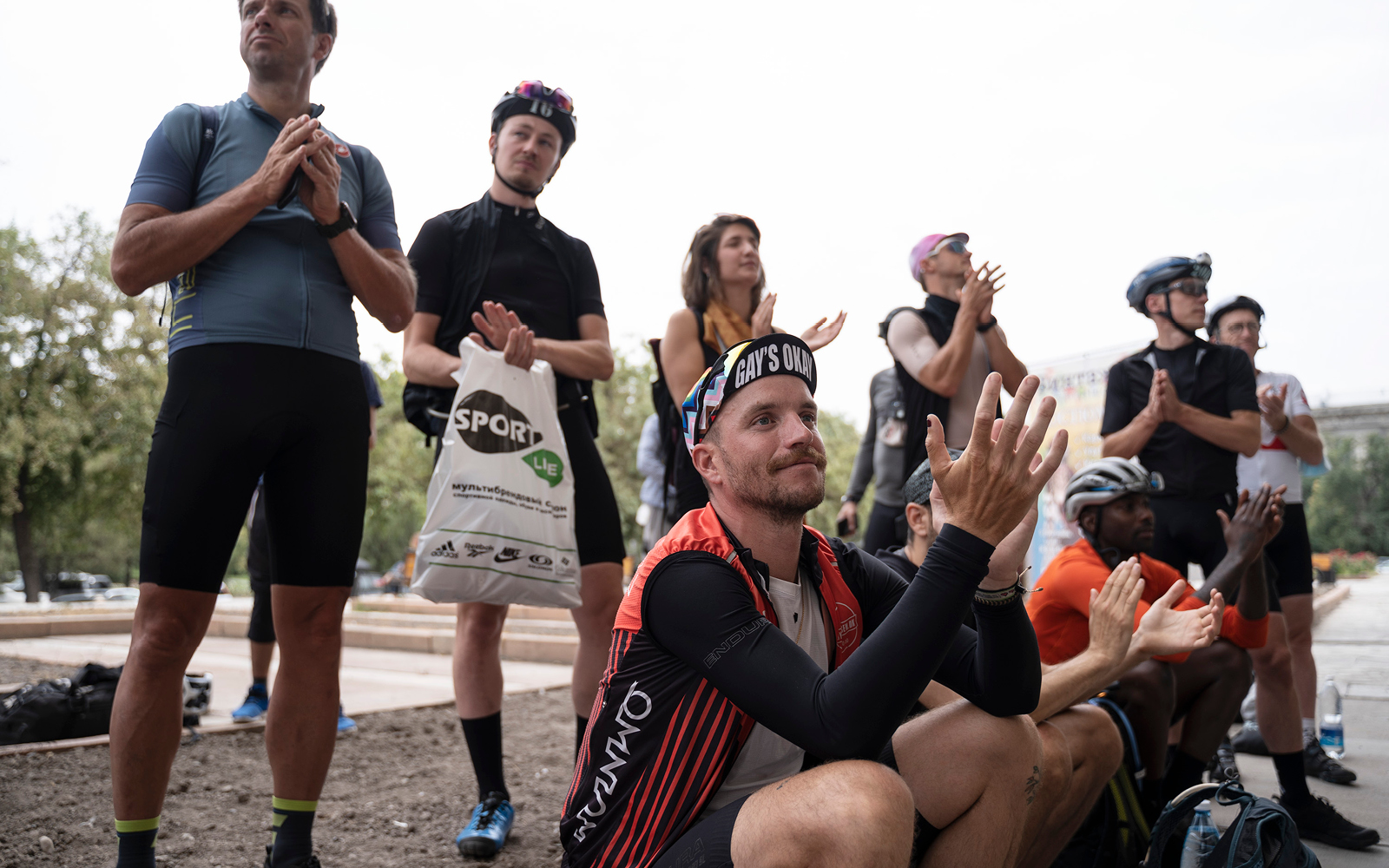
In the meantime, though, staying in the mental space wasn’t easy. The infrequent but welcome company of Austrian rider Max Reise was a big help – they’d have a laugh and pick each other up, or ride together late into the night under an unforgettable full moon – but otherwise it was up to Shaw to interpret not just the terrain but the isolation too.
“Every two or three days I would get cellphone signal and I’d check the dots, just to see where everyone is. All of a sudden you realise that even though you’re in this vast empty nothing, there’s somebody 10km behind you, and a bunch of people 15km in front.”
Like the shepherds and their families they’d met along the way, there was a unity in the riders’ collective isolation. As Shaw said: “everyone was in the same boat”. It’s hard, once again, to avoid seeing the metaphor, not to mention the similarities that could be drawn with the wider human experience in the past couple of years.
“Real talk: I had a fantastic race and I tried to focus on the happy times, but I had some incredibly low moments too, as everyone did. I think it’s a combination of the sort of ongoing fatigue and your own level of expectation. I was really focussed on keeping a level head – it’s a long way to go, anything could happen, don’t get ahead of yourself, just maintain. But then as time goes on, when you feel that if things happen that make you feel like you might fail, it hits extremely hard because of the amount of work you’ve done to get where you are. The cost of failure feels momentous.
“The really amazing thing about these really long days and the incredibly varied terrain is that you can easily experience your highest highs and your lowest lows, not just on the same day but within a couple of short hours. At the top of each impossibly tough climb, you just gaze over the view next to you and everything that’s just happened is over. I remember one of the guys told me ‘goldfish syndrome is really important.’ You have to be ready to forget the bad parts when the good parts arrive.”
Allan’s Silk Road setup
More Events Stories
The good times roll on
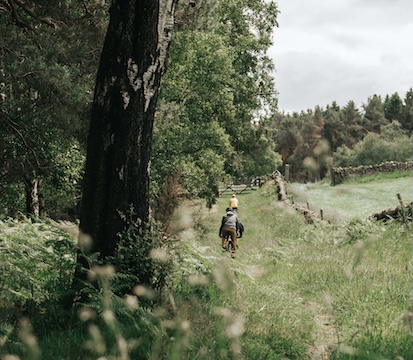
From fenland to moorland via castles and cream teas. The picnic ride tour continues.
READ MORE


